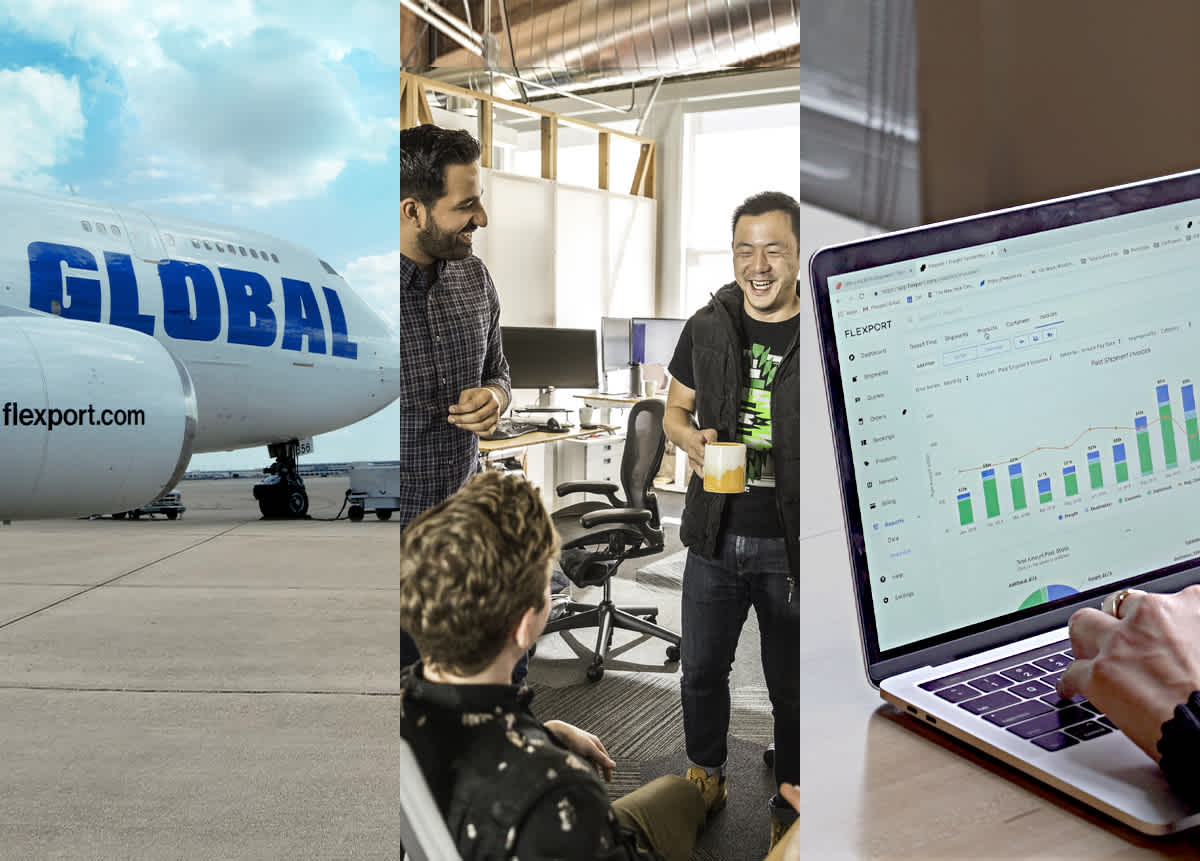
October 8, 2022
How to Optimize Your Supply Chain to Reach Net Zero Emissions
How to Optimize Your Supply Chain to Reach Net Zero Emissions
Getting your shipping to net zero emissions is doable. It could also be your organization’s greatest opportunity to contribute to a more sustainable future for everyone.
Flexport has offered carbon offsets for logistics since 2017, but, since then, our ability to be more precise and impactful has evolved. The recent announcement of our partnership with Pachama is part of that, but there’s more you can do beyond offsetting carbon, too.
Here, we’ll help you learn more about how you can run an effective supply chain and develop a net-zero emissions plan.
What Does Net Zero Emissions Mean?
Net zero emissions refers to a balance between the greenhouse gas emissions we produce versus those we remove from the atmosphere.
It means we can’t add more than we take out. The component of reducing impact, rather than just offsetting it, is what makes this approach different. Ultimately, net zero planning needs to be bigger than carbon neutrality, including a reduction of all greenhouse gas emission types.
For shippers, there are competing interests. Moving cargo quickly and reliably is key to business stability and growth. But there’s no such thing as greenhouse gas-free shipping yet, so companies need to get intentional about climate impact.
Making the switch to zero-emission fuel will require accommodation, too. The Journal of Commerce cites an early-2022 Getting to Zero Coalition report that suggests clean fuel will be at least double the price of conventional fuel over the next 20 years, even if the price gap is less severe to start.
That’s why it’s so important for companies invested in supply chain and logistics to take positive action now and plan how to commit to more in the near future.
Plan to Achieve Net Zero
Flexport’s sustainability and social impact team, Flexport.org, identifies three steps to set the stage for net zero shipping emissions.
Calculate your emissions. This data is available in real-time for Flexport users in every quote and shipment, and in analytics.. For non-Flexport shipments, you can assess your emissions per shipment by using our free calculator via an API or contact Flexport.org to get a log-in to upload CSV reports.

Formulate a plan. Each company is different, so look at short, medium, and long-term changes you can make, using industry resources and standards as guideposts. Weave agility into your thinking, so you can adjust your goals as you nail down the specifics. Consider that technology may advance or regulations, like sustainability acts currently under consideration, may narrow options as you progress.
Get leadership on board. Create company-wide interest and executive buy-in by building the business case. This takes scenario planning, something every employee can do with help from a partner like Flexport.
Scenario Planning and Action
Make meaningful progress towards net zero by parsing the details of your company’s shipment scenarios. This exercise can be extraordinarily helpful in today’s logistics climate, anyway. At Forward 2021, the most recent edition of Flexport’s annual shipping conference, speakers shared multiple ways in which knowing your logistics details can help with climate impact, negotiation power during RFP season, and overall supply chain resilience.
Flexport can help model the data for you to make the best decisions. Here are a few approaches that work for companies of all sizes:
Compare emissions across routes.
Shipping from Asia into Portland versus Seattle may barely change ocean emissions, but once you add trucking to a warehouse in Idaho, one route could be a much better choice than the other. This type of analysis may also surface ways to shorten transit times or include other cost benefits.
Shift transport modes over time.
A move from air to ocean could halve your emissions in some cases. But if it’s at the expense of a drop in speed, it could create inventory gaps during a time when growth opportunities are high. Instead, you might shift part of your inventory at a time, extending product cycles as you go. Look for additional wins while you’re at it—maybe it’s longer-term confidence in your order management. Confirming your POs against your sustainability goals could strengthen your supplier relationships and help inform financial outlooks.
Improve your container utilization.
Flexport research from 2018 found that approximately two-thirds of containers don’t ship full. This is obviously inefficient, not to mention risky when you need to stay in stock. Services like LCL shipping or OceanMatch can help you optimize for speed, cost, and sustainability, especially since Flexport LCL shipments are already carbon-neutral.
Partnerships for Change
As your company discovers a path to net zero emissions, be sure to consider how your partnerships can impact your progress. Flexport is set up to help you pair your efforts with those of credible partners, like Pachama. We’re also a certified EPA SmartWay Transport Partner since 2018 and a founding partner of The International Air Cargo Association’s Sustainability Program.
For more ways to work towards and achieve net zero shipping emissions for your company, email carbon@flexport.com.



